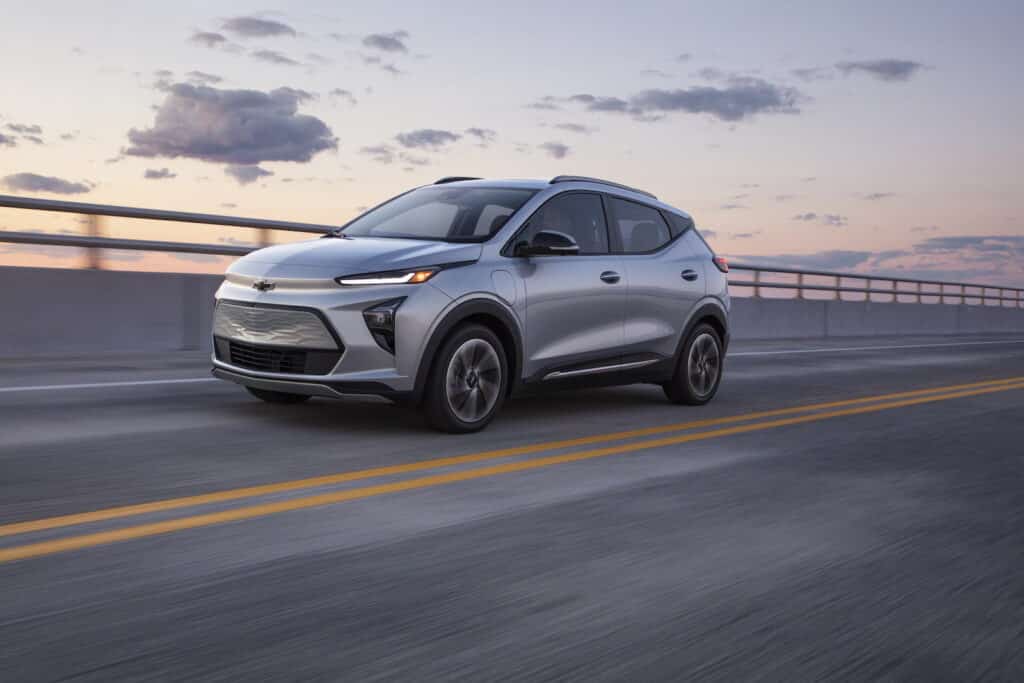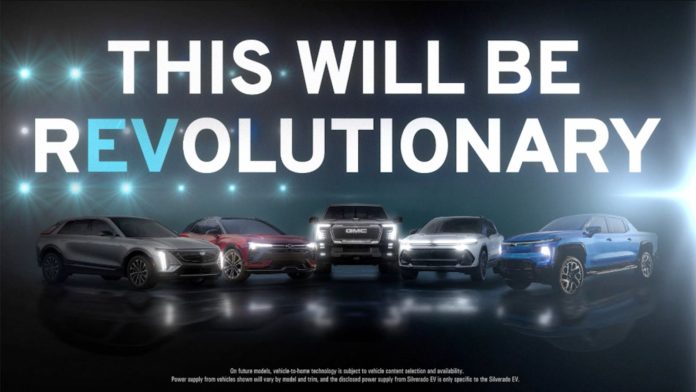General Motors plans to rapidly expand the number of EV models featuring bidirectional charging capabilities, starting with the 2024 Chevrolet Silverado EV just now going into production.
Also known as vehicle-to-home, or V2H, technology, this will allow owners to draw from a GM EV’s onboard battery pack, whether to keep the lights on at home or office during a blackout, or to power a remote work or campsite.
V2H is a feature GM plans to roll out on a handful of models this coming model year, including the Silverado EV and GMC Sierra EV Denali Edition. But the automaker announced Tuesday the technology will be added across its portfolio of Ultium-based EVs “by model year 2026.”
Plenty of power
“By integrating V2H across our entire Ultium-based portfolio, we are making this groundbreaking technology available to more consumers, with benefits that extend well beyond the vehicle itself, and at broader at scale than ever before,” said Wade Sheffer, vice president, GM Energy.
Today’s EVs store a tremendous amount of power. At the low end among GM EVs, the Chevrolet Silverado stores 66 kilowatt-hours in its lithium-ion battery pack. While GM hasn’t revealed the precise figure, the GMC Hummer EV is believed to store over 200 kWh of energy,
Even the Bolt could keep the lights on for quite a while considering the typical American homeowner uses about 30 kWh of current a day. And buyers could also switch to a vehicle’s battery pack to save money during peak midday hours when energy demand is highest and many utilities charge higher rates.
Home, office or out in the field

Using V2H technology, motorists also could power remote locations where they have no access to an electric outlet, or where they might otherwise have to rely on a portable generator.
Some of GM’s upcoming EVs will feature 120-volt and even 240-volt outlets where motorists can plug in an extension cord. With other EVs, a V2H system simply reverses the flow of current when a vehicle is plugged into a charger. That approach allows for an EV battery to provide power for most or all of a home’s needs.
That does, however, require wiring up a home to accept the reverse flow of current. And that can cost thousands more than the price of installing a one-way charger.
GM accelerates V2H rollout
GM will begin rolling out V2H capabilities on a number of 2024 EV models, including the 2024 Chevrolet Silverado EV RST, followed by the 2024 GMC Sierra EV Denali Edition 1, 2024 Chevrolet Blazer EV, 2024 Chevrolet Equinox EV, 2024 Cadillac Lyriq and the upcoming Cadillac Escalade IQ,
The goal is to have this technology available on all subsequent GM EVs by the 2026 model year. It is unclear whether V2H systems will be offered as standard equipment or as options.

A number of competitors offer V2H functionality, though the amount of power that can be drawn from a vehicle’s battery will vary by model. The Hyundai Ioniq 5, for example, can deliver a maximum 3.6 kilowatts of current, the same load as the Kia EV6 which uses the same underlying electrical architecture.
Though it features a smaller battery, the Nissan Leaf can provide up to 7 kilowatts of current. The Ford F-150 Lightning, meanwhile, manages up to 9.6 kW
A critical disadvantage
Relying on backup battery power, rather than using a generator, does have its advantages, starting with noise, since EVs operate all but silently.
Some homeowners have begun installing standalone battery systems, such as Tesla’s Powerwall. But they typically can provide less than a day’s worth of energy for the typical home. The standalone Tesla system, for example, can store just 13.5 kilowatt-hours of “juice,” barely a fifth the capacity of a Chevy Bolt’s pack.
But a V2H system does have a critical disadvantage. It can’t be used if the vehicle is unplugged or driven off.
Bidirectional charging systems go by a variety of different names. Along with V2H, they’re also known as vehicle-to-load and vehicle-to-grid, or V2L and V2G, technology.

